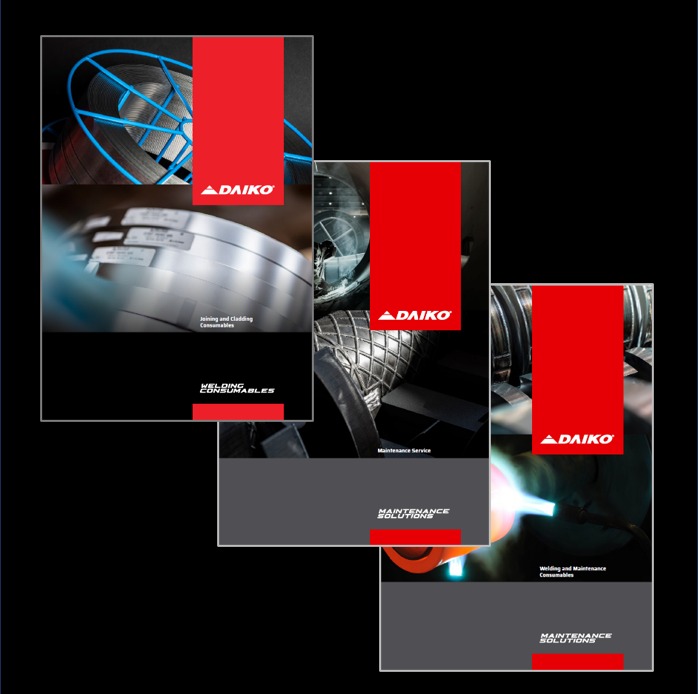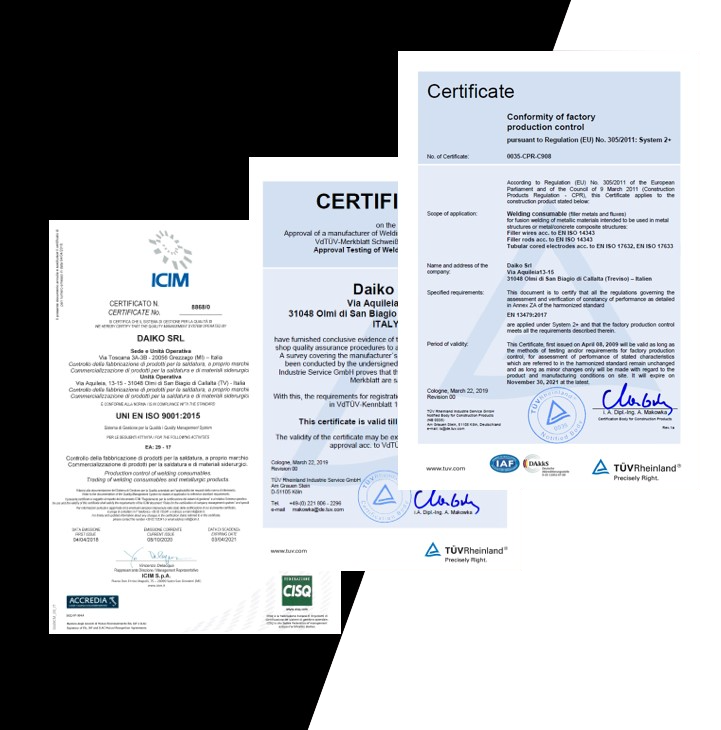- Home
- >
- All DAIKO products
- >
- FERRITIC - MARTENSITIC STAINLESS STEEL
- >
- 630 (17-4-PH)
630 (17-4-PH)
Application
Employed for the welding of exceptionally high-strength martensitic stainless steels, these alloys undergo precipitation hardening facilitated by copper additions. The resultant strength outpaces that of standard 300 series austenitic stainless steels by up to threefold. Notably, the FV520/450 alloys showcase corrosion resistance on par with 304 stainless steel. Conversely, the 630/17-4PH variants, distinguished by their lack of molybdenum and heightened carbon content, fall short in providing equivalent resistance to intergranular and pitting corrosion compared to their FV520/450 counterparts. This welding methodology proves indispensable in the manufacturing of crucial components like pump shafts, impellers, and hydraulic equipment. Its diverse applications span critical sectors, including the oil and gas industry, petrochemical realm, marine environments, and nuclear engineering.
Alloy Type
High strength martensitic precipitation hardening
stainless steels.
Microstructure
In the PWHT condition the microstructure consists
of precipitation hardened tempered martensite with
some retained austenite.
Materials
EN W.Nr.: 1.4542 (X5CrNiCuNb 16-4), 1.4548 (X5CrNiCuNb17-4-4), 1.4549 (GX5CrNiCuNb1).
ASTM: A564, A693, A705, gr. XM-25, A564, gr. 630, A747, CB7Cu-1 (cast).
UNS: S45000, S17400.
PROPRIETARY: FV520B (Firth Vickers), Custom 450, 630 (Carpenter), 17-4PH (AK Steel Steel).
Welding & PWHT
Preheating is generally unnecessary for materials up to 15mm in thickness. However, in the case of thicker and more restrained sections, it is advisable to employ a preheating and interpass temperature range of 100-200°C. Temperatures surpassing 200°C may hinder martensite transformation, leading to microstructural coarsening. When utilizing matching composition consumables for welding, it becomes imperative to undergo a Post Weld Heat Treatment (PWHT). The standard procedure involves utilizing materials in the over-aged condition. The PWHT for over-ageing follows a specific sequence: 750°C for 2 hours, air-cooled to 15°C, followed by 550°C for 2 hours and air cooling. During the cooling process, the weld metal undergoes transformation from austenite to martensite (Ms) below approximately 250°C. However, a significant fraction of austenite persists at ambient temperature. Since achieving sub-zero cooling is impractical, this retained austenite is destabilized through annealing at 750-850°C. Carbide precipitation in the austenite raises its Ms temperature, ensuring complete transformation upon cooling. This approach promotes more effective tempering and ageing during the second cycle of PWHT. It's crucial to note that omitting the initial PWHT cycle may result in properties with greater batch variability, highlighting the importance of adhering to the complete heat treatment regimen.
Products of the line 630 (17-4-PH)
| Product name | Process | AWS specifications | EN ISO specifications | |
| DAIKOWT 630 | GTAW |
AWS A5.9
ER630 |
EN ISO 14343-B
SS630 |
|
| G-TECH 630 | SMAW |
AWS A5.4
E630-16 |
EN ISO 3581-B
E 630-16 |
|
| DAIKOWM 630 | GMAW |
AWS A5.9
ER630 |
EN ISO 14343-B
SS630 |
|
| DAIKOWS 630 | SAW |
AWS A5.9
ER630 |
EN ISO 14343-B
SS630 |


